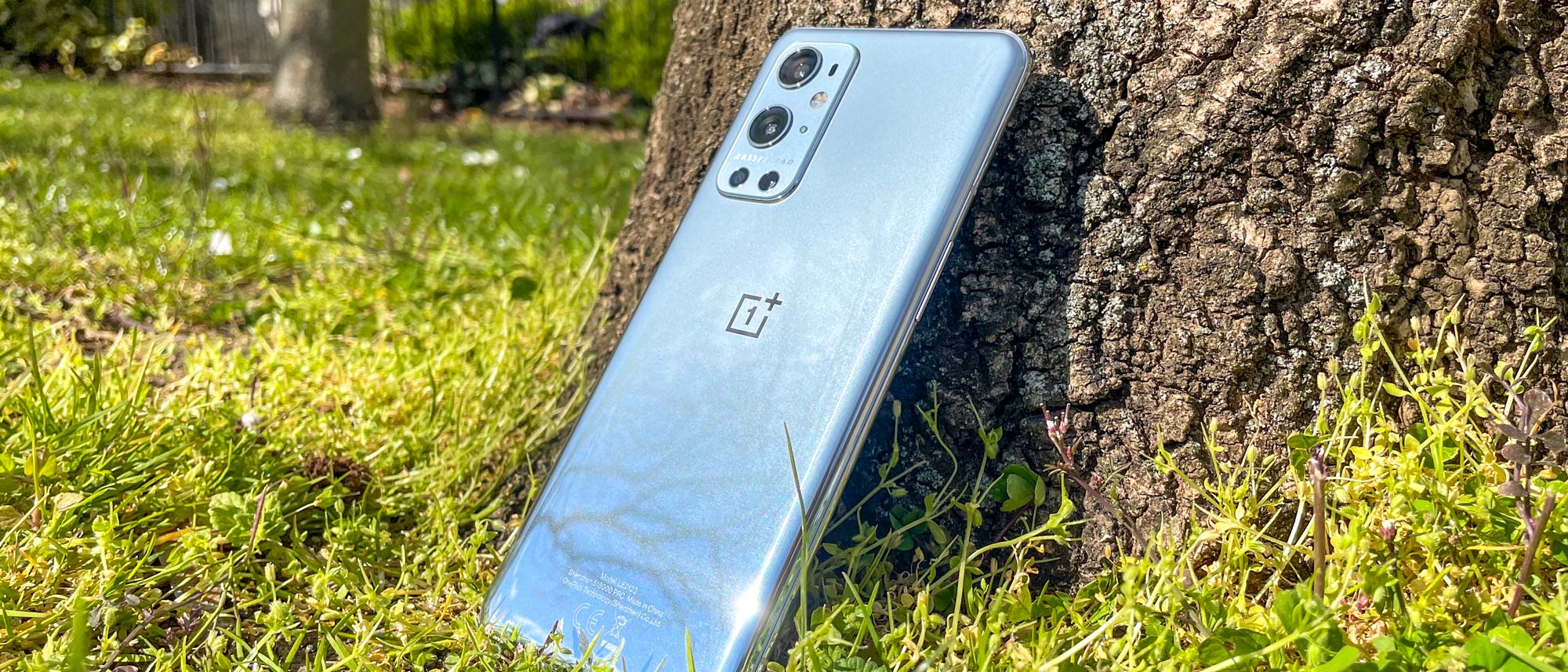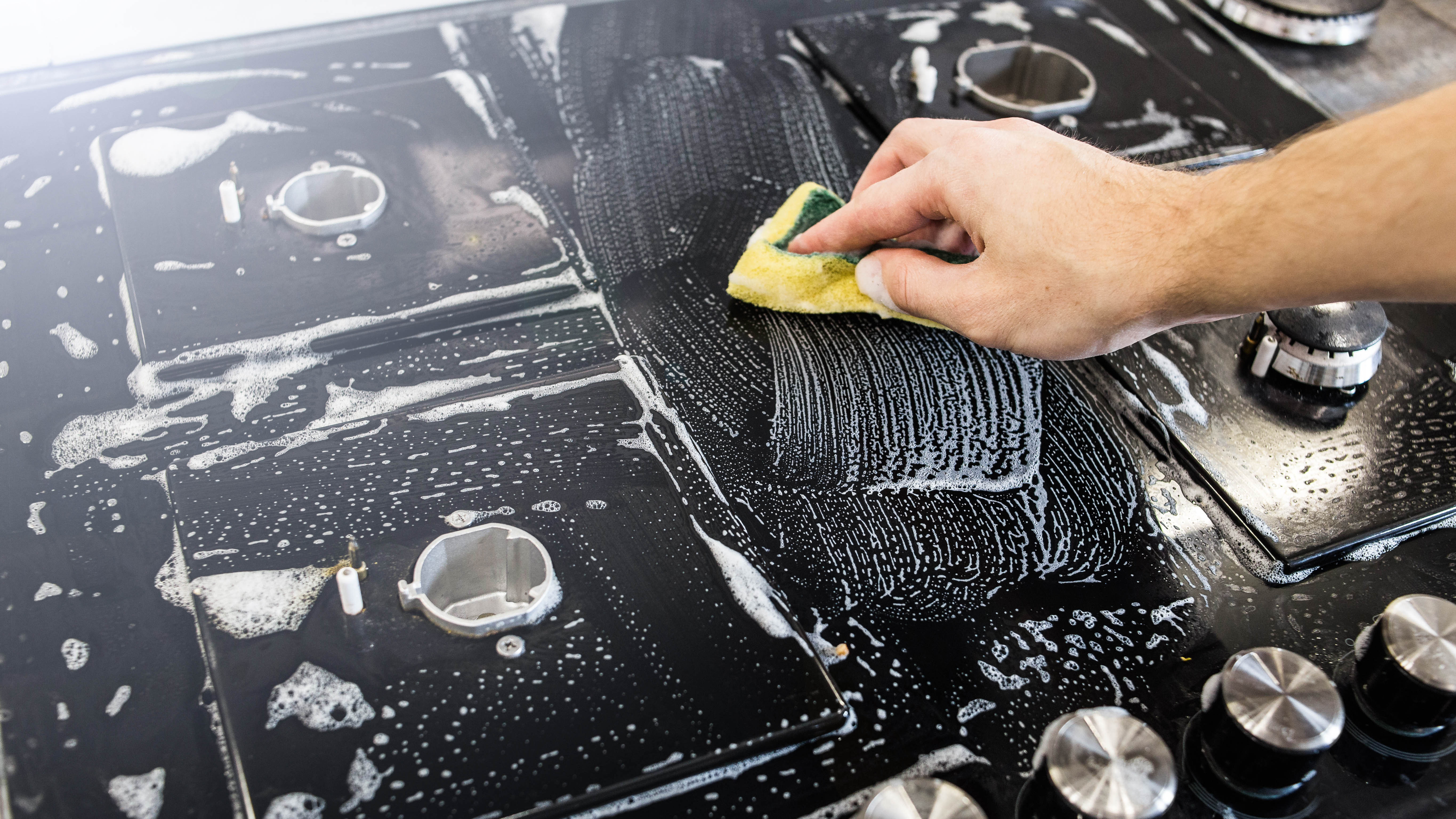Tom's Guide Verdict
This beautiful new phone from OnePlus impresses in every department. While the OnePlus 9 Pro doesn’t offer the best camera phone even with a new partnership with Hasselblad, it’s a serious contender for the best Android phone overall.
Pros
- +
Gorgeous design
- +
Beautiful 120Hz display
- +
Excellent performance
- +
Crazy fast wired and wireless charging
- +
Fantastic cameras
Cons
- -
Morning Mist model is very slippery
- -
Nightscape photos are inconsistent
Why you can trust Tom's Guide
OS: Android 11 / OxygenOS 11
Screen size: 6.7-inch AMOLED QHD+ (3,168 x 1,440)
Refresh rate: 1Hz - 120Hz
CPU: Snapdragon 888
RAM: 8GB, 12GB
Storage: 128GB, 256GB
Rear cameras: 48MP (f/1.8) wide, 50MP (f/2.2) ultrawide, 8MP (f/2.4) telephoto with 3.3x optical zoom, 2MP (f/2.4) monochrome
Front camera: 16MP (f/2.4)
Video: Up to 8K at 30 FPS
Battery: 4,500 mAh
Battery life (Hrs:Min): 10:40 (120Hz) / 10:38 (60Hz)
Charging: 65W wired (charger included), 50W wireless
Colors: Morning Mist, Pine Green
Size: 6.4 x 2.9 x 0.34 inches
Weight: 6.9 ounces
Update: The OnePlus 10 Pro is now official! Check out our OnePlus 10 Pro vs. OnePlus 9 Pro face-off to see if it's worth waiting for this new version of the phone.
The OnePlus 9 Pro blew me away with how good it is.
Credit the improvements to the camera, resulting from OnePlus teaming up with Hasselblad. The partnership with the camera experts has produced a lot of little tweaks, such as the orange shutter button and the unique shutter sound.
But the changes introduced to the OnePlus 9 Pro involve more than superficial homages to the company’s new partner. While still just a bit shy of the best camera phones, the OnePlus 9 produces the best photos of any phone OnePlus has ever produced.
If you're looking for something more affordable, check out our OnePlus 9 review. But as you'll see in this OnePlus 9 Pro review, there's a lot to love for less money than Samsung's Galaxy S21 Ultra. Both phones go head-to-head for the crown of the best Android phone.
OnePlus 9 Pro review cheat sheet
- The OnePlus 9 Pro is a no-holds-barred premium device and is one of the best phones you can buy right now.
- There are two Pro variants — the 8GB/128GB model costs $969 and the 12GB/256GB model costs $1,069. At time of writing, only the 12GB/256GB is available for pre-order. Since this review was published, OnePlus officially canceled the 8GB/128GB model.
- The 6.7-inch QHD+ AMOLED panel is beautiful with punchy colors, deep blacks, and a 120Hz adaptive refresh rate. It matches the Galaxy S21 Plus and beats the iPhone 12 Pro in our testing.
- The OnePlus 9 Pro’s camera performance is solid. Colors are a subdued, natural tone. Nightscape is inconsistent, though.
- Based on our lab testing, the OnePlus 9 Pro is the one of the most powerful Android phones we’ve tested yet, even matching the ROG Phone 5 powerhouse.
- With a 4,500 mAh battery, the OnePlus 9 Pro went for 10 hours and 40 minutes in 120Hz mode in our battery test. It can charge from empty to 50% in 15 minutes and to 99% in 30 minutes on the 65W charger, making it the fastest charging phone in this year's Tom's Guide Awards.
- The OnePlus 9 Pro ships with Android 11 and OxygenOS 11. It will receive two years of OS updates (Android 13) and three years of security patches (2024). Since this review was published, OnePlus decided to extend the OnePlus 9 Pro's support window to three years of updates and four years of patches.
OnePlus 9 Pro review: Price and availability
In the US, the OnePlus 9 Pro starts at $969 for the 8GB/128GB base model. For another $100, you can double the storage and get 12GB of RAM. Overall, that’s a $70 increase from the OnePlus 8 Pro, which started at $899. OnePlus has steadily increased its prices year over year, so this is bound to upset longtime fans.
Luckily, if you don’t want to drop that much on the Pro model, you can opt for the cheaper OnePlus 9. Starting at $729, you get much of the same phone minus some bells and whistles. OnePlus wanted to go all out with the 9 Pro, and that unfortunately means a higher cost to the consumer.
However, $969 costs less than the Galaxy S21 Plus and iPhone 12 Pro, both of which start at $999. For $30 less, you get an equally capable handset, so it’s not a bad deal in the grand scheme of things. OnePlus has built its reputation on offering more phone for less money, but that’s not the company’s sole focus anymore. The flagship killer has joined the ranks it once swore to defeat.
The Google Pixel 6 Pro starts at a lower $899; see how it compares in our Google Pixel 6 Pro vs. OnePlus 9 Pro comparison.
At time of writing, only the 12GB/256GB OnePlus 9 Pro is available to pre-order from OnePlus. The 8GB/128GB was officially canceled earlier this year, likely due to the chip shortage that has affected many industries.
The OnePlus 9 Pro comes with a 65W charger and a USB-C cable in the iconic red and white. The ludicrous 50W wireless charging stand is sold separately for $69.99.
If you want some OnePlus features but don't want to shell out on a flagship phone, then check out our OnePlus Nord CE 2 review.
OnePlus 9 Pro review: Design
The OnePlus 9 Pro impresses with a gorgeous, eye-catching design. That’s not all that surprising coming from OnePlus, which from the very beginning has created unique phones. From the sandstone back on the OnePlus One and the OnePlus 2 to the red OnePlus 6, this company knows how to make pretty devices that wow when you see them in person.
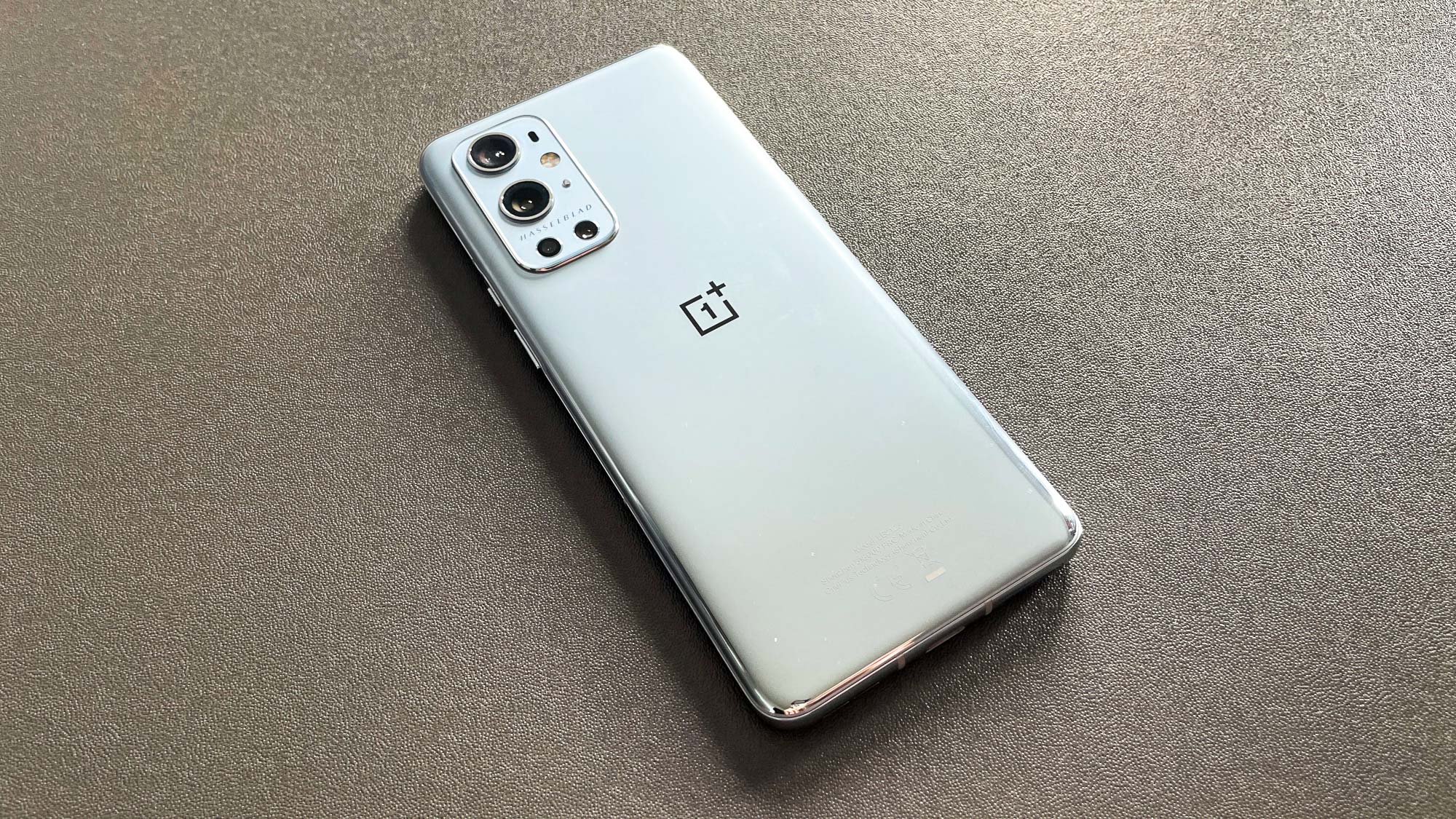
The OnePlus 9 Pro camera module has a lot going on, and it clashes a bit with the minimalism on the rest of the phone’s back. With four lenses, a laser autofocus, LED flash, and a microphone — not to mention the Hasselblad logo — there’s a lot packed into the upper left corner of the phone. The material surrounding all of it has a nice semi-matte look. It certainly doesn’t match the mirror-like finish on the rest of the phone, but it complements the back quite nicely.
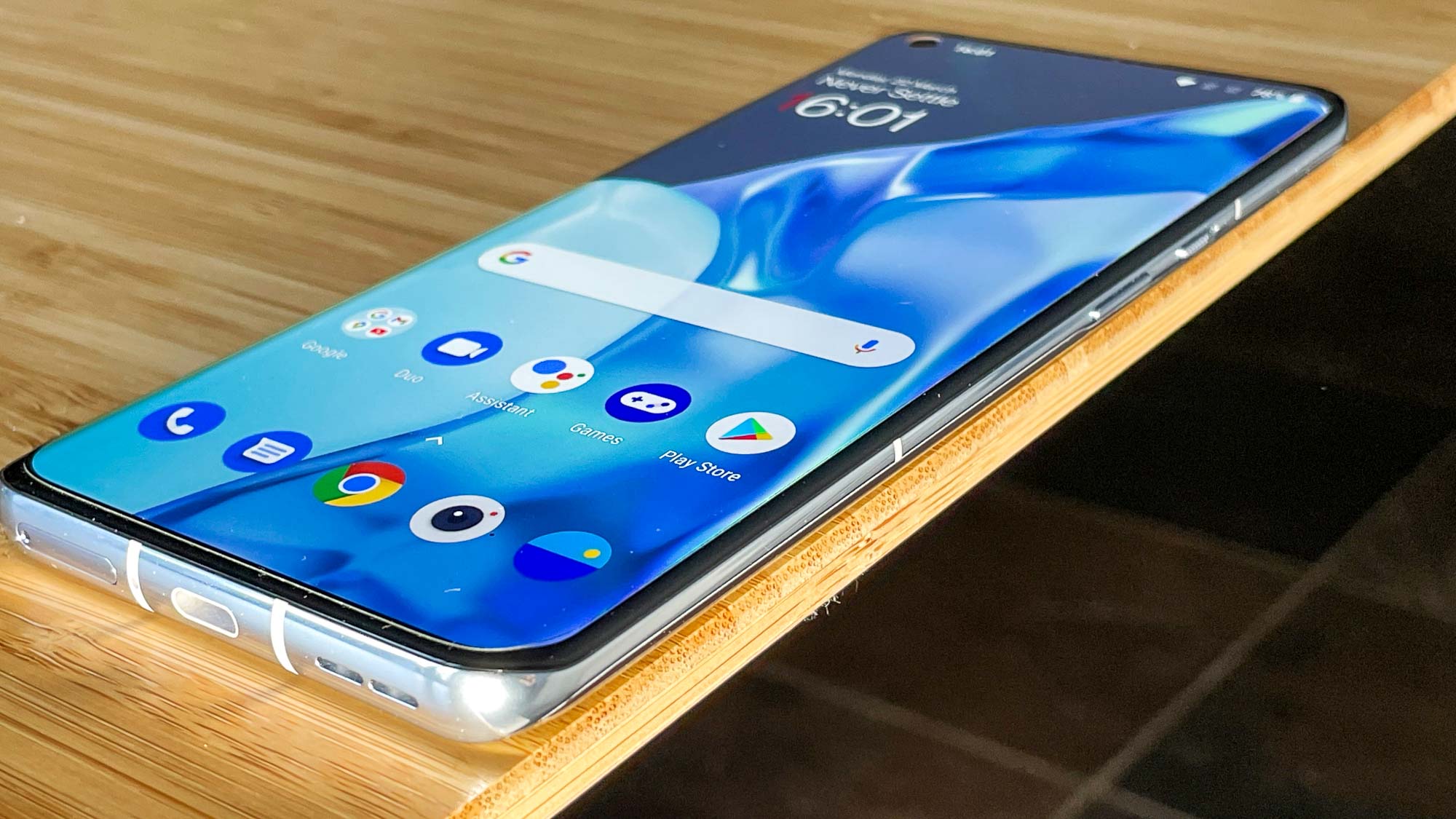
With the curved display and minimal top and bottom bezels, the OnePlus 9 Pro looks incredible from the front. Though neither the Galaxy S21 Plus nor the iPhone 12 Pro are ugly phones, the OnePlus 9 Pro is one step above them.
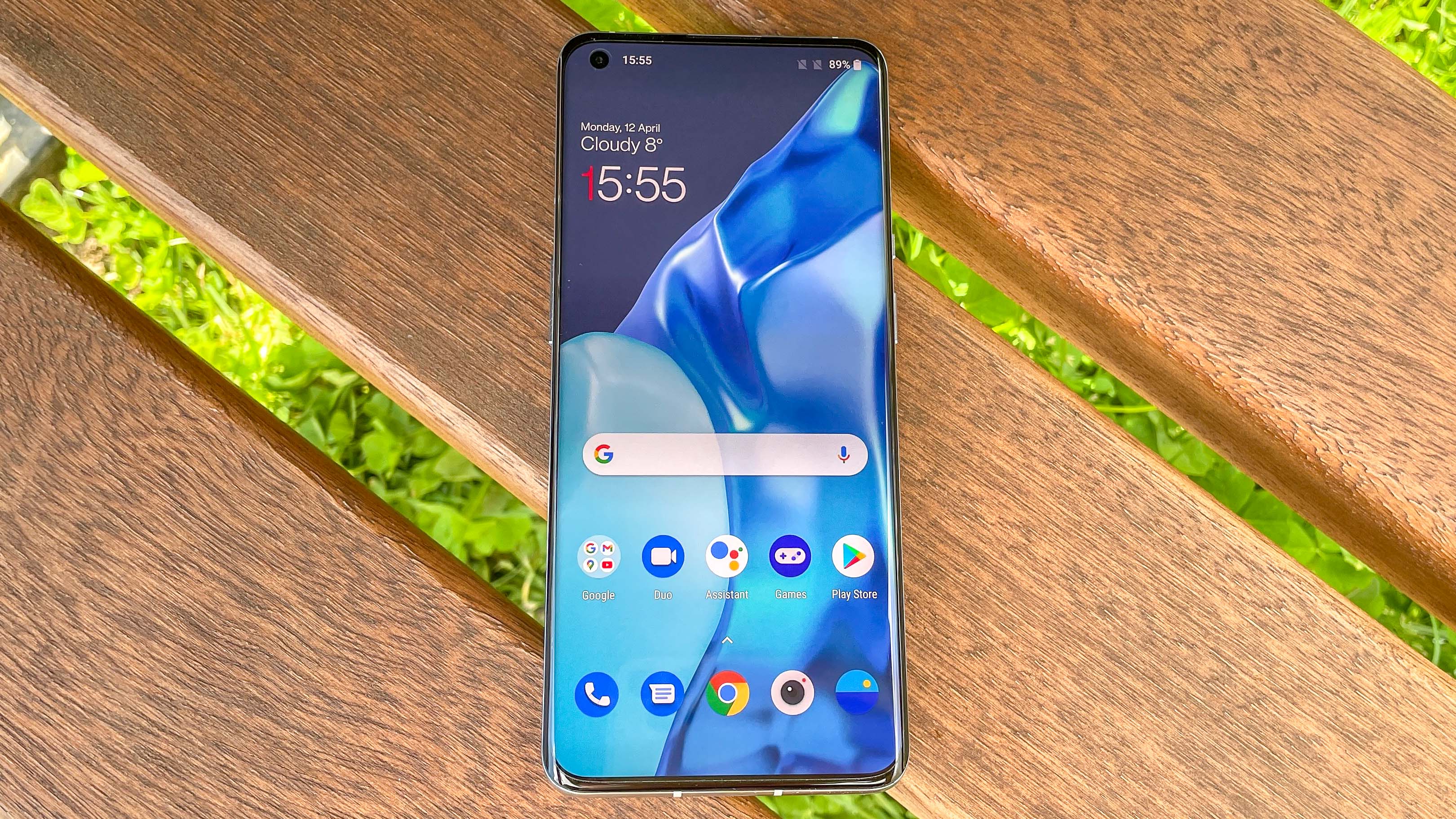
It comes down to the curved display on the OnePlus device. The curve is subtle and doesn’t hamper usability with accidental touches. With only the hole punch cutout in the top left corner to mar the all-display experience, the 9 Pro looks amazing from all angles.
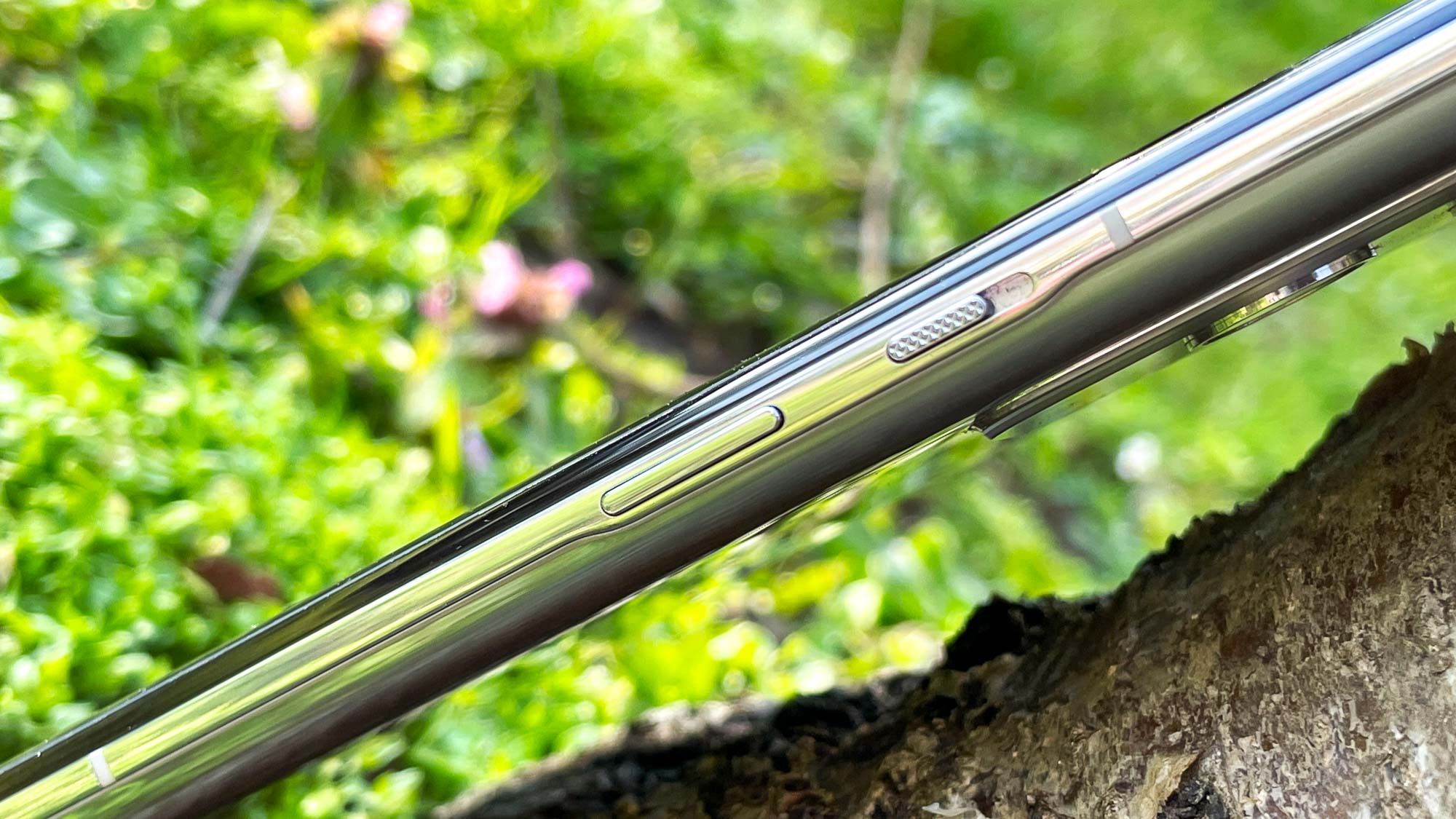
At 6.4 x 2.9 x 0.34 inches, the OnePlus 9 Pro is a big phone. But weighing just 6.9 ounces, it’s also quite light and easy to use. Compare that to the Galaxy S21 Plus’ 7.05 ounces and the iPhone 12 Pro’s dense 6.66 ounces, and the 9 Pro just feels light in my hand. The finish makes the phone very slippery, though, so be careful of the OnePlus 9 Pro falling out of a pocket or slipping from your grip.
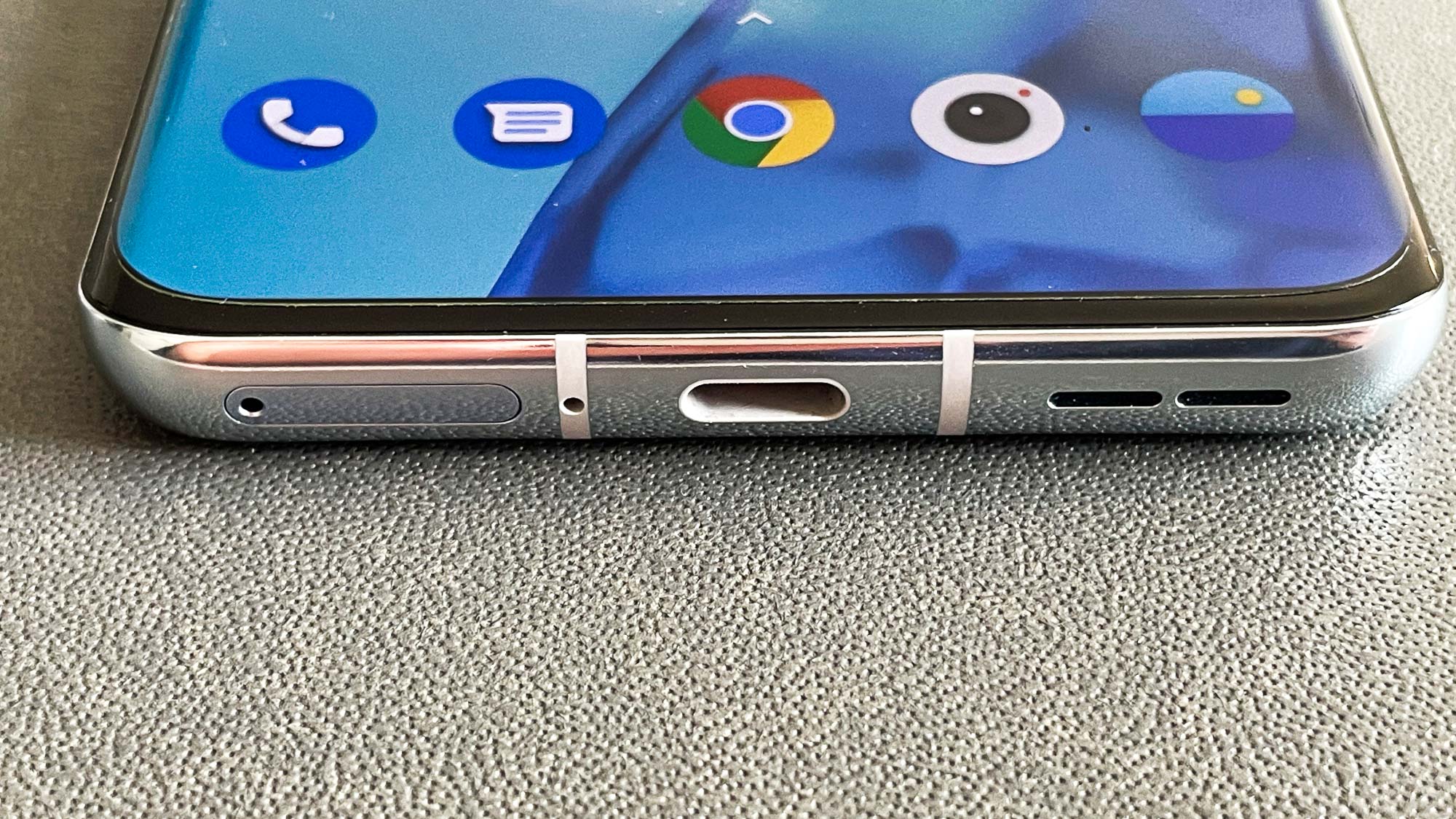
Tucked into the display is an optical fingerprint sensor and it’s quite good. I only had a few false negatives in my time with the 9 Pro. It’s extremely quick and I can’t tell a difference between it and the ultrasonic reader in the Galaxy S21 Plus. It’s a heck of a lot quicker than Face ID and much more convenient out and about (especially for mobile payments).
I have to give OnePlus props for the vibration motor in the 9 Pro. The haptics engine is spectacular — almost on par with the iPhone 12 Pro in my opinion — and makes for a lovely experience tapping, typing, authenticating, and receiving notifications.
One confusing thing has been IP certification for the OnePlus 9 Pro. If you buy the phone through T-Mobile, you get IP68. Confirmation on unlocked models remained a mystery, until OnePlus CEO Pete Lau confirmed on Twitter that the 9 Pro is, in fact, IP68.
The OnePlus 9 Pro comes in two colors: Morning Mist and Pine Green. I received the Morning Mist model, which has this beautiful mirror-like sheen to it. Head on, you’ll see your face reflected, but look at the phone from an off angle and you’ll notice the finish get darker. Unfortunately, it picks up fingerprints and smudges very easily.
OnePlus 9 Pro review: Display
If you heard rumors about the quality of the OnePlus 9 Pro’s display leading up to its launch, know that all of that hubbub ended up being true. The OnePlus 9 Pro’s display looks fantastic, both in our lab testing and in my personal use. It’s bright with rich colors, deep blacks, and a smart 120Hz adaptive refresh rate.
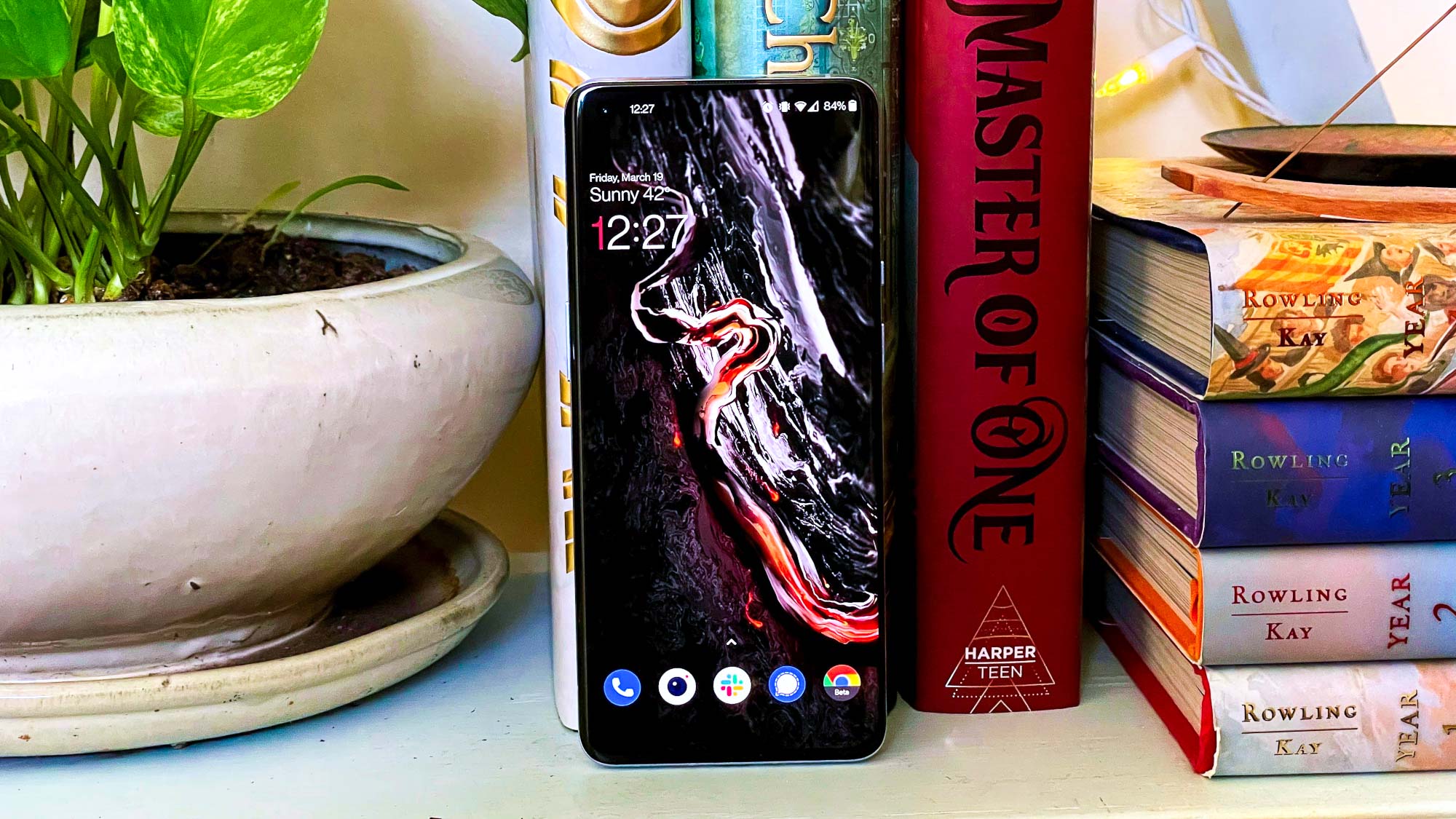
The 9 Pro scored well in our lab results. In its Natural mode, the phone managed 119.9% of the sRGB spectrum and 84.9% of the taxing DCI-P3 gamut. With a Delta-E score of 0.2 (where 0 is perfect), the OnePlus 9 Pro stands out among the competition.
Take the Galaxy S21 Plus, for example. In its natural mode, that device managed 103.8% of the sRGB space and 73.5% of DCI-P3, with a Delta-E of 0.18. The iPhone 12 Pro reproduced 115.6% of the sRGB color gamut and 81.9% of the more demanding DCI-P3 color space, with a 0.24 Delta-E rating that’s not as accurate as the OnePlus 9 Pro’s.
Out of the box, the OnePlus 9 Pro display is set to Vivid. At that setting, the 9 Pro reproduced 208.1% and 147.4% of the sRGB and DCI-P3 color gamuts, respectively. Its Delta-E was 0.32. So if you like bright, vivid colors, this mode is for you. That said, I opted for the Natural mode and found it more than punchy enough for my eyes. Everything looks so rich and smooth.
I personally find the OnePlus 9 Pro’s display to be more interesting to look at than the Galaxy S21 Plus’ or iPhone 12 Pro’s. It may not be as bright as either at an average of 722 nits (versus 747 on the S21 Plus and 742 on the 12 Pro), but it performs more than adequately outdoors.
Another key aspect of the display’s excellent performance is its touch sampling rate. OnePlus calls its super high rate Hyper Touch and claims it sextuples the speed with which the screen communicates with the processor. That gives the OnePlus 9 Pro a very low touch latency, which is key for certain games. At launch, Hyper Touch supports four titles: Brawlstars, League of Legends: Wild Rift, Call of Duty: Mobile, and PUBG Mobile. More will come in time.
In practical, day-to-day use, Hyper Touch doesn’t mean much. It shaves off a few milliseconds in the delay between when you touch the screen and the phone responds. Practically every phone nowadays has decently low touch latency, but Hyper Touch is meant to give a slight edge in mobile games.
OnePlus 9 Pro review: Cameras
For 2021, OnePlus has put a huge effort into improving its mobile photography. The partnership with Hasselblad is evidence of this. Both companies are focusing initially on producing natural color tones, more akin to what you’d see on a Pixel or iPhone rather than the oversaturated look of a Galaxy device.
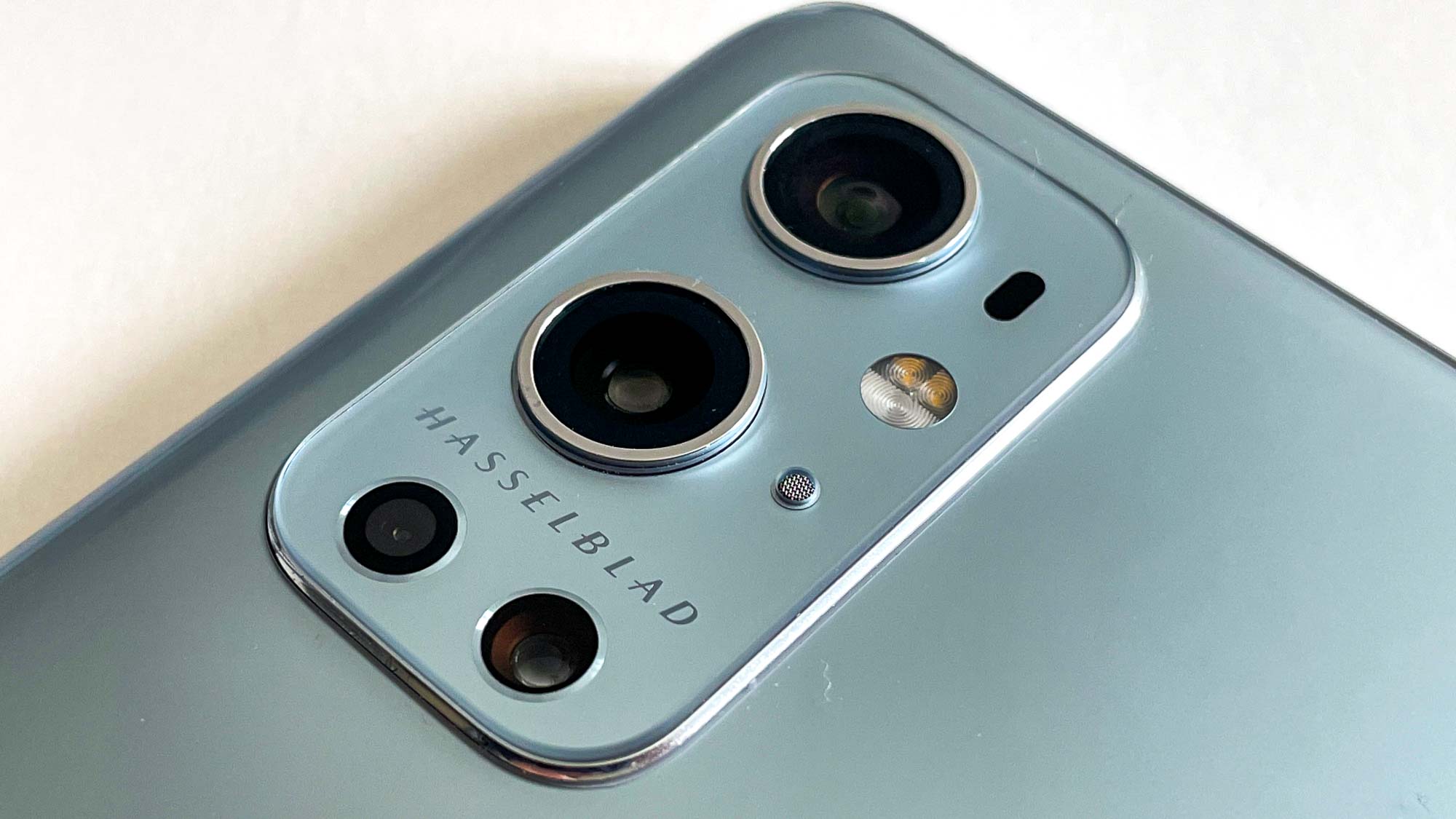
There are other things about the camera setup that OnePlus wants you to consider, too. Some of these include a lack of edge distortion in ultrawide shots, improvements to the low-light Nightscape mode, and a 3.3x optical and 30x digital zoom on the telephoto lens. That’s all well and good, but how does the OnePlus 9 Pro perform in real-world use?
The short answer is very well. The 9 Pro is a marked improvement over past OnePlus phones in terms of photography. The lenses are useful in their own ways (though I find the monochrome one to be the least helpful) and photos come out looking quite good.
The main camera is a 48MP Sony IMX789 capable of shooting in 12-bit RAW for advanced photographers and DOL-HDR for rich video. The ultrawide is a 50MP IMX766 sensor with a freeform lens to correct for edge distortion. Finally, there’s the 8MP telephoto. All of this works in tandem with the monochrome sensor and the laser autofocus above the dual-LED flash.
To put the OnePlus 9 Pro through its paces, I spent a weekend out photographing and comparing it to other top-tier camera phones in different departments. I mostly challenged the 9 Pro to take on the iPhone 12 Pro and it did really well. For low-light, I put it up against the Pixel 5’s Night Sight and for zoom testing, it went head-to-head with the Galaxy S21 Plus.
Starting off, this photo of a produce stand at Whole Foods forced each phone to show off colors the best. Since either device favors softer, more natural colors, there’s hardly a noticeable difference between the two. The OnePlus 9 Pro really brought out the reds, yellows, and greens. Even the teal color of the zucchini baskets looks rich and lively. The iPhone’s shot is a bit brighter, but almost too exposed.
In this photo of a small fountain, the pictures once again look strikingly similar. The OnePlus’ image is a bit warmer than the iPhone’s, but it’s still a very close competition between the devices. Which one wins this comparison is down to personal preference — I happen to like the iPhone’s shot a bit more in this scene, but mostly because it’s slightly cooler.
This close-up shot of these polka dot plants shows a bit more of a difference between the two. Here, the 9 Pro softened the scene, opting for cooler colors while the iPhone went all out with the pinks and whites. The iPhone’s image is brighter and feels more colorful, even if the OnePlus’ is more true to life. Again, this one boils down to personal preference.
Before we leave this plant store, we come to this scene of an anthurium plant. The differences between the OnePlus 9 Pro and iPhone 12 Pro are readily apparent. The OnePlus’ shot is very yellow, as if the temperature got really warmed up. The iPhone’s shot is much cooler and more realistic. The green of the leaves in the background is much richer than what the 9 Pro put out. The iPhone clearly wins here.
To test the OnePlus 9 Pro’s ultrawide lens, I took a hike around the shore of Lake Accotink in Virginia. The iPhone’s ultrawide shot feels richer, with deeper colors and more depth. The 9 Pro, meanwhile, feels a bit drab. However, if you look closely at the edges, you can see a tiny bit of distortion on the iPhone’s image. The OnePlus photo doesn’t have this problem.
Changing phones for a moment, I pulled out the Galaxy S21 Plus and used it to test zoom, starting with the optical zoom. The 3x on the S21 Plus is just a tiny bit further back, but it’s hardly noticeable. What you can see, however, is that the OnePlus 9 Pro’s shot looks much calmer.
Though the sun was out in full force, the S21 Plus’ image looks much brighter. This is a common thing with Samsung phones and it’s almost never realistic. So while both phones do well with zoom, I have to give the OnePlus the victory here simply because of how much more accurate its image is.
Testing the max 30x zoom on each phone, neither image is good. However, the S21 Plus has the AI-based Zoom Lock feature to make things steadier. It also has the preview in the top left corner so that you can see where you’re zoomed in. The 9 Pro lacks either of these features.
Going back to comparisons against the iPhone, both phones do a remarkable job of capturing my likeness in their respective portrait modes. The background blur radius is nice and artistic, colors are great, and you can tell that I was looking right into the sun. That being said, the iPhone’s shot is brighter and verges on overexposure. The OnePlus wins this comparison.
For low-light night modes, I pulled out the Pixel 5. Google’s Night Sight is the best night mode out there, while Nightscape, OnePlus’ night mode, is inconsistent, sometimes failing to even expose properly. In this photo, you can see that the 9 Pro’s image is a bit cooler than the Pixel’s, though it’s more in focus. The bricks look redder in the Pixel’s shot.
When it comes to selfies, you can see a difference with the OnePlus 9 Pro. The OnePlus’ image looks washed out, as the phone had trouble accounting for the sun behind me and getting enough details of my face. The iPhone’s shot, meanwhile, looks better with a downplayed tone to the image. The redness of my face and beard stand out more, and the blondeness of my hair is richer. I’d much rather post the iPhone’s selfie than the 9 Pro’s.
The Hasselblad partnership also extends to the Pro mode in the OnePlus 9 Pro’s camera app if you really want to fine tune your photography experience. Pro mode has options for white balance, ISO, shutter speed, and everything else you’d expect from a manual mode. The 12-bit RAW mode can output 64 times more colors than the traditional 10-bit RAW mode on other devices.
OnePlus 9 Pro review: Video
The OnePlus 9 Pro also does well with recording video. I tried a couple of times while out on a hike compared with the iPhone 12 Pro. I recorded my walking on the trail with both phones simultaneously at 1080p 60 FPS.
The 9 Pro did a great job with stabilization and microphone quality — you could hear me huffing and puffing quite well. The footage was silky smooth and I came away very impressed. OnePlus did an excellent job with the video capabilities of the 9 Pro, including support for 8K 30 FPS and 4K 120 FPS.
Beside visual fidelity and frame rate, the OnePlus 9 Pro also supports DOL-HDR, time lapse on the ultrawide camera, portrait video (which works well unless you move too much), focus tracking, and even Nightscape Video for capturing footage in low light. All in all, it’s a robust suite of features for videographers and you’ll be quite pleased with what you can capture.
OnePlus 9 Pro review: Performance
For as long as I can remember, OnePlus has prided itself on providing top-tier smartphone performance for less than its competitors. Even with gaming phones floating around that pack huge batteries, large, high refresh rate screens, ultrasonic shoulder buttons, and high-performance modes that eke out every last bit of power from the processor, the OnePlus 9 Pro measures up well to these tricked-out handsets.
The OnePlus 9 Pro packs a Snapdragon 888, currently the best system-on-chip you can get in an Android device, paired with either 8GB or 12GB of RAM. I’m confident that you cannot make this phone stutter or slow down. It’s a veritable powerhouse. Whether I was editing documents, messaging on Slack, listening to Spotify, or hopping into a Call of Duty: Mobile match, nothing made the OnePlus 9 Pro slow down.
The OnePlus 9 Pro went through the usual suite of benchmarks in our lab. In Geekbench 5, it scored 1,126 in single-core and 3,685 in multicore. For reference, the iPhone 12 Pro manages 1,595 on the single-core test and 3,880 on the multi-core test, so Apple’s A14 Bionic is still the leader of the pack. But compare the OnePlus 9 Pro to most powerful Android phone that we’ve tested to date, the ROG Phone 5, and you’ll see a noteworthy similarity — the ROG Phone scored 1,125 on single-core and 3,672 in multicore, just behind the OnePlus model.
In 3DMark’s Wife Life Unlimited graphics test, the OnePlus 9 Pro managed 34.5 frames per second with a score of 5,755. These results put the 9 Pro neck and neck with the ROG Phone 5, which managed 34.8 FPS and a 5,806 score. The iPhone 12 Pro, meanwhile, handily beats both of them both with a 8,619 and 51 FPS.
When we spoke to OnePlus, the representatives touched on what the company called OnePlus Cool Play. This is basically a multi-layer cooling system that shifts the heat to the outside frame, making the phone more comfortable to hold when you’re gaming for a long time. While not as advanced as the cooling solutions you find on gaming phones, it’s still pretty impressive and the impact is noticeable.
Make no mistake, the OnePlus 9 Pro is a powerful phone. Not only does it almost reach Apple’s crown, but it practically matches the ROG Phone 5. The OnePlus 9 Pro is the most expensive OnePlus device yet, but when it comes down to raw and gaming performance, it leaves nothing to be desired.
OnePlus 9 Pro review: Battery life and charging
The OnePlus 9 Pro comes with a 4,500 mAh battery that lasts a respectably long time in my experience. In Tom’s Guide’s battery test, where a device is left to endlessly reload webpages repeatedly on a 5G connection, the 9 Pro averaged 10 hours and 40 minutes with the Smart 120Hz enabled. Surprisingly, switching to the 60Hz mode barely made a difference — it was actually a lower 10 hours and 38 minutes.
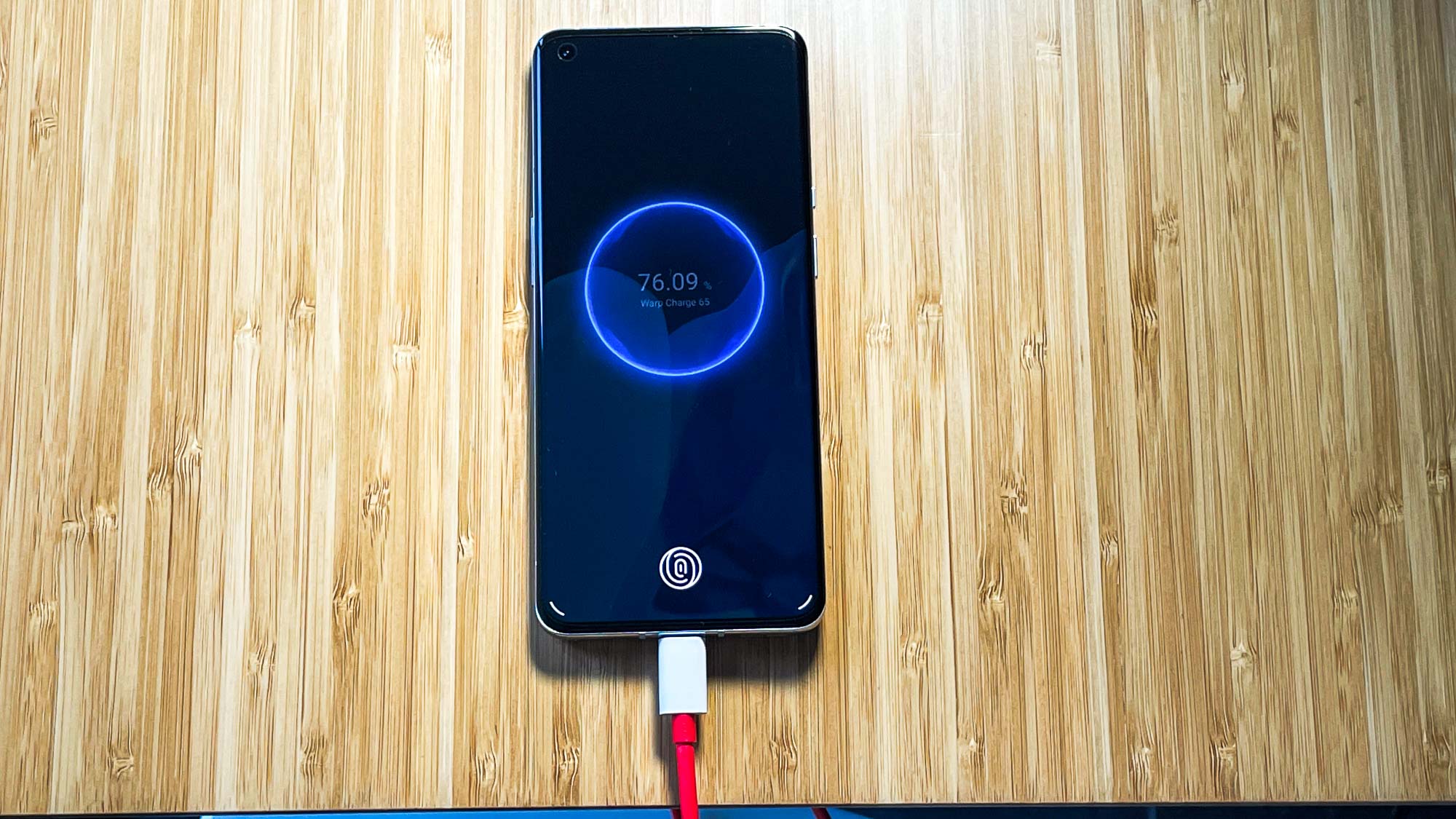
What could explain this discrepancy? My hypothesis comes down to the LTPO technology. In the 120Hz mode, the OnePlus 9 Pro can go all the way down to 1Hz for static content. The refresh rate will ramp up to 120Hz when it’s needed, such as when you’re scrolling through a web page. But you’ll likely be on the lower end of things a lot of the time.
Going for 10 hours and 40 minutes is quite good. Though it’s not quite up to par with the best phone battery life list, it’s still quite nice. The iPhone 12 Pro only managed 9 hours and and 6 minutes in its 5G mode and the Galaxy S21 Plus lasted for 9 hours and 41 minutes. Any phone that lasts longer than 10 hours on 5G with a high refresh rate is impressive in our book.
OnePlus and its sister company Oppo have paved the way for incredibly fast charging. For a long time, OnePlus’ Warp Charge (formerly Dash Charge) was the fastest charging you could get in the US, destroying Qualcomm’s Quick Charge in every regard. Nowadays, OnePlus and Oppo have less of a lead in wired charging, but their VOOC technology is great.
The 9 Pro uses what OnePlus calls 65T charging. The T means that there is lower internal resistance, which allows the phone to charge at a higher wattage for a longer period of time. You don’t need to be an electrical engineer to understand that the charging speed on this phone is bonkers.
But the OnePlus 9 Pro also supports wireless charging, up to a mind-boggling 50W with the OnePlus Wireless Charger. That’s right, the 9 Pro can charge faster wirelessly than the Galaxy S21 Plus and iPhone 12 Pro can charge wired!
We tested the 9 Pro’s wired charging prowess — in 15 minutes, the phone went from 0% to 61% and in 30 minutes, it just about fully charged, reaching 99% from 0%. We didn’t test wireless charging times, but OnePlus claims 0% to 70% in 30 minutes and 0% to 100% in 50 minutes.
A recent rumor has the OnePlus 10 Pro tipped to come with 125W charging, near doubling the 65W charging the current OnePlus phones have. So the as impressive as the OnePlus 9 Pro's charging speeds, are it could be superseded before too long.
OnePlus 9 Pro review: Software and OxygenOS
The OnePlus 9 Pro ships with Android 11 out of the box with OxygenOS 11 on top. OnePlus once built a reputation for offering a stock-like Android experience with OxygenOS. I used to call it “stock+” because it looked and felt like Google’s Android vision, but it had added features like gestures, some theming stuff, and other tweaks.
With OxygenOS 11, OnePlus started to move away from that. The new software design felt a bit more like Samsung’s One UI, which itself has aimed for a more stock-like feel. Suffice to say, it’s a mess trying to compare OEM skins these days. All that said, I love the OxygenOS experience on the OnePlus 9 Pro.
I like how smooth everything feels. I like the theming options, including accent colors and second font option (which I really, really enjoy using). I like the extra features like additional gestures such as double tap to wake or the shortcuts. Moreover, I like the stability and how well the software utilizes the power of the hardware powering it. I was using a press build, so the software will be tweaked slightly for the final release, but I only came across a few things that OnePlus told me would definitely be fixed for the phone’s launch.
In the past, OnePlus has liked to be overly aggressive with memory management, but I haven’t noticed this problem with the OnePlus 9 Pro. I received the unit with 12GB of RAM and I never came close to needing that much. However, I never once had an issue with Spotify or YouTube closing in the background like I have with previous OnePlus phones.
OxygenOS is elegant in all the right places while putting on a minimalist face. When you first boot up the OnePlus 9 Pro, you’ll find a simplistic, easy-to-use experience. But if you dig around in the settings for the phone and the launcher itself, you’ll find plenty of things to tinker with to make the whole thing feel like it’s your device.
OxygenOS 12 is now available, but you may want to hold off on updating it. The update as it stands is full of bugs and broken features.
OnePlus 9 Pro review: 5G
The story about the OnePlus 9 Pro and 5G has been confusing at best. Here's how it boils down.
- The 9 Pro has full 5G support on T-Mobile, so if you install an Uncarrier SIM, you're good to go.
- OnePlus recently announced that the OnePlus 9 series is certified to work on Verizon's 5G, both low-band and mmWave. During the course of the review, I used a Verizon SIM and was able to connect to low-band 5G.
- If you're on AT&T, you will not get 5G at all. The OnePlus 9 Pro does not support AT&T's 5G bands, so you'll be on LTE. In all honesty, that may not be all that bad considering the state of 5G these days.
It's not a one and done situation with 5G and the OnePlus 9 Pro. Carefully consider the above facts before you make your purchase. For what it's worth, I have not had trouble using a Verizon SIM in our OnePlus 9 Pro review unit.
The only thing I have noticed is a lack of Wi-Fi calling at time of writing — it's possible that OnePlus will address this in a software update since my unit uses a press build of OxygenOS.
OnePlus 9 Pro vs. the competition
Of course, it's been a few months since the OnePlus 9 Pro has launched. It came to light that OnePlus was messing with throttling app performance, spoofing benchmarks, and that the company would support the phone for longer. All told, the OnePlus 9 Pro is still one of our favorite Android phones, going head-to-head with the powerful Galaxy S21 Ultra.
We'd be remiss if we didn't mention phones that have released since then, or are expected to launch very soon. For example, Samsung's new foldable Galaxy Z Fold 3 and Galaxy Z Flip 3 have launched to much praise. The iPhone 13 is due in just a few weeks and we're even approaching the Google Pixel 6.
The OnePlus 9 Pro faces stiff competition in both Android land and the smartphone market at large. OnePlus will have a lot of work to do to make the OnePlus 10 Pro a worthy adversary for the Galaxy Z Fold 3, iPhone 13, and Pixel 6. But for now, it's hard to go wrong with the OnePlus 9 Pro.
OnePlus 9 Pro review: Verdict
The OnePlus 9 Pro is one hell of a device and one that I adore using. The OnePlus 9 Pro rejuvenated my love of Android and all that the OS is capable of doing, something that didn’t happen when I tested the Galaxy S21 Plus.
OxygenOS is the smoothest Android experience possible. I didn’t once have a problem with apps lagging or delaying to launch, I never saw a single hiccup, and I didn’t have issues with apps closing in the background prematurely. I can’t say the same things for my Pixels. OnePlus has taken OxygenOS to new heights and it’s my favorite iteration of Android right now.
If you opt for the OnePlus 9 Pro, you’re getting a very capable camera. While Nightscape might be a bit inconsistent and just plain inferior to the Pixel’s Night Sight or iPhone’s Night Mode, you can still get decent low-light photos. Out in broad daylight, though, the 9 Pro stays extremely close to its camera rivals, if not outright beating them in certain scenarios.
Whether you need solid video or competent photography, the OnePlus 9 Pro has you covered. While the iPhone 12 Pro does arguably better with video, I found the 9 Pro to be pretty good, especially for an Android phone.
Yes, a $969 starting price is really steep for OnePlus. Long gone are the days where OnePlus’ flagship would cost hundreds less than their counterparts, but I don’t know if that’s really a bad thing. I’m a longtime OnePlus user and fan, and while it’s sad to see the company leave its legacy behind with the 9 Pro, I see why it happened. The 9 Pro is the pinnacle of what the company could accomplish. No holds barred, this phone has all the bells and whistles, and other Android phone makers have a lot of work to do to catch up.

Jordan is the Phones Editor for Tom's Guide, covering all things phone-related. He's written about phones for over six years and plans to continue for a long while to come. He loves nothing more than relaxing in his home with a book, game, or his latest personal writing project. Jordan likes finding new things to dive into, from books and games to new mechanical keyboard switches and fun keycap sets. Outside of work, you can find him poring over open-source software and his studies.
-
Reggie3 Although it's a nice phone it's lacking a lot of features that the Sony Experia 1 Mk II has. SD card, headphone jack, power button fingerprint sensor, camera button.Reply -
broughton777 Oneplus have kept up with the modern companies. I agree expandable storage a nice option but with cloud storage is out of date.Reply -
O Bloody Hell Sorry, no, i routinely travel in areas where "the cloud" is not accessible. Or 2g service is common. Expandable storage, aka "SD cards" is NOT "an option".Reply
I stopped even looking at Samsung phones when they dropped it, and LG's fading from the market is really annoying me, esp. when they glassed up their final model, which is, frankly, beyond retarded.
Glass has no business as the main component of the case.
"Oh, you just need to get a protective case for it!"?
What is the POINT of a phone that needs -- desperately -- a protective case? It fattens it back up, making the "slimness" irrelevant. It also gets RID of the entire point of the "glass", which, frankly, has never made much sense anyway, "fingerprints oh noez!!"
Phone functionality is now retrograde. Less pixels, garbage cases, no ability to really STORE a lot of data. And hey, only US$1000!!!!
